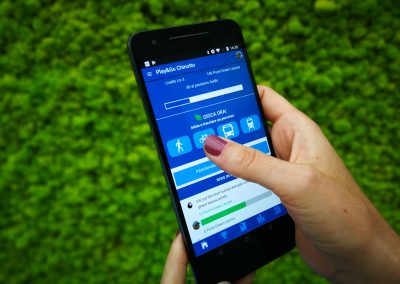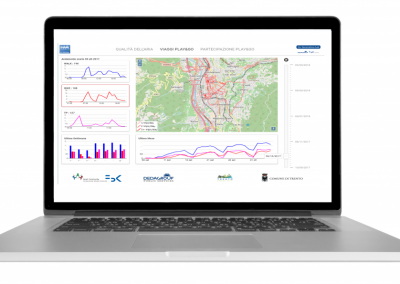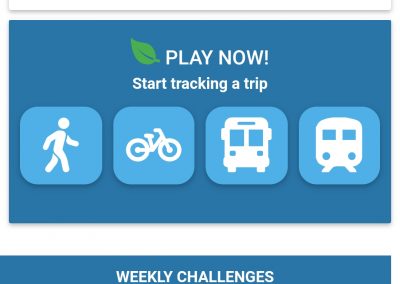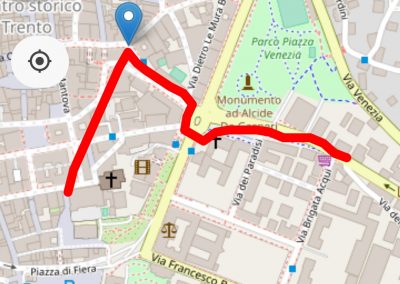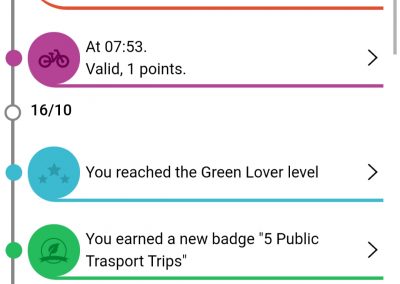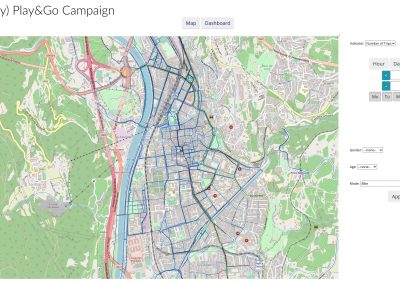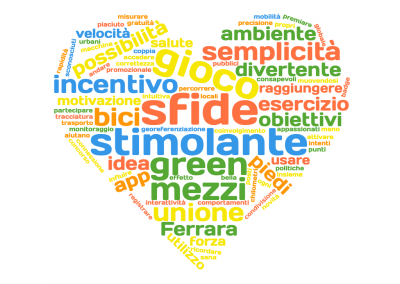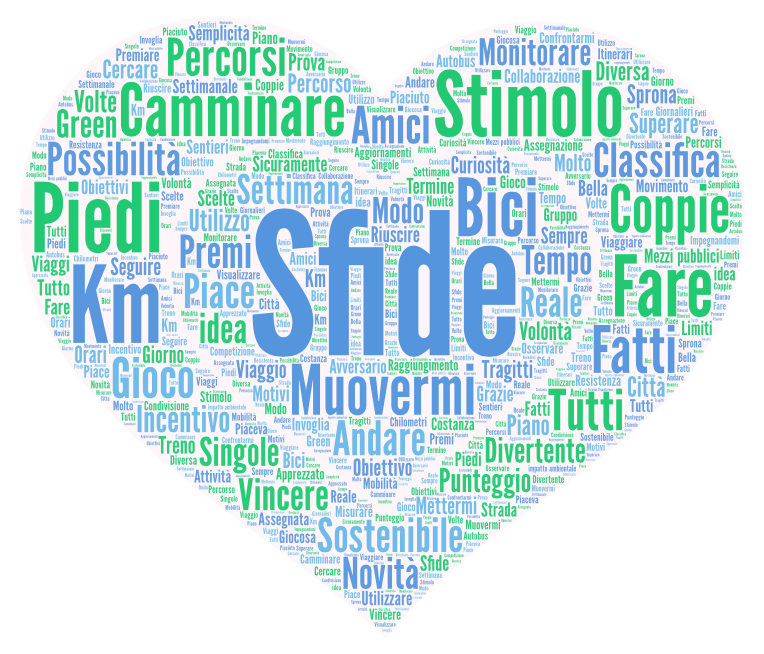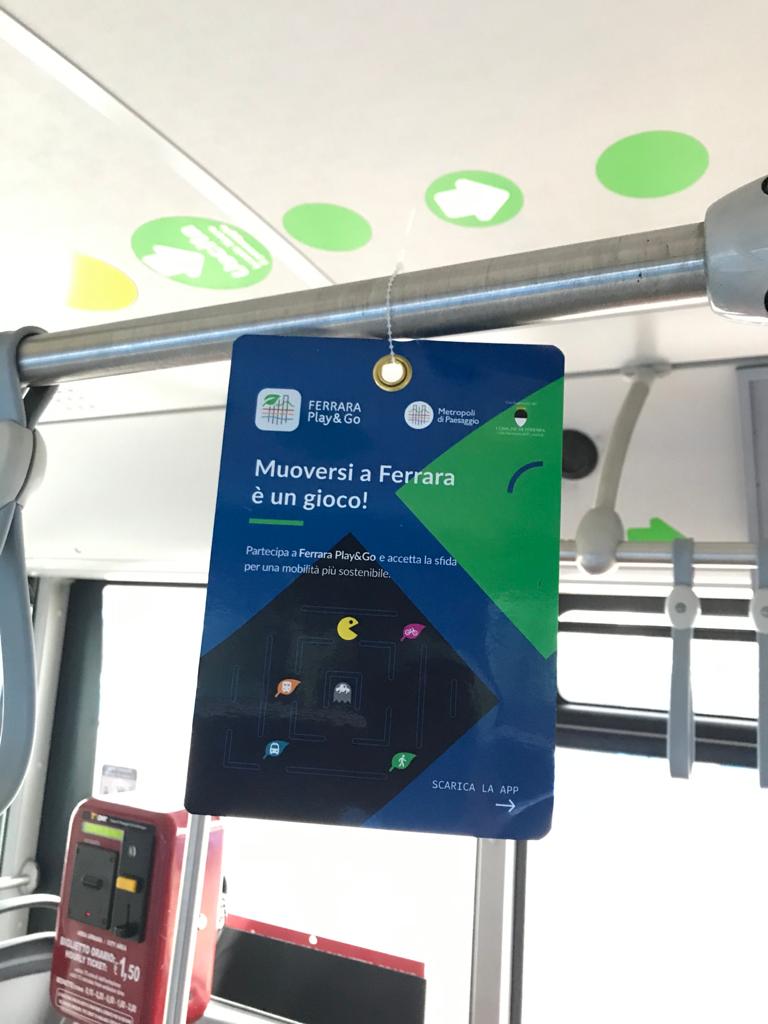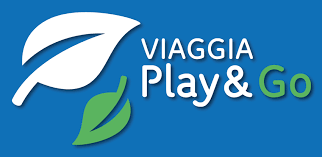
Play&Go is a a full-fledged Gamification Platform supporting the implementation and operation of sustainable mobility campaigns promoting green mobility behaviors.
PLAY&GO PLATFORM
The Play&Go Platform caters to the following stakeholders. Firstly mobility managers and decision-makers, who want to promote city- or company-specific sustainable mobility policies, launching behavioral change actions targeting specific objectives and closely observing the results and impact. Secondly, game designers, exploiting the game concepts and mechanics offered by the platform to design and develop gamebased applications in line with the policies and objectives of mobility managers. Finally, citizens, collectively participating in behavioral change actions, by interacting with the gamified application and enjoying virtual and real incentives.
-
Gamification Engine – an open-source component thatsupports the basic functionalities related to the design, deployment, and execution of games. The engine supports various extensible game concepts (e.g., points, badge collections, levels, leaderboards) and single or multi-player mechanics (e.g., challenges and missions). It also includes advanced features for the automatic generation of challenges (the Challenge Generator component), which are personalized playable units that are created considering the player’s profile, game state, and history.
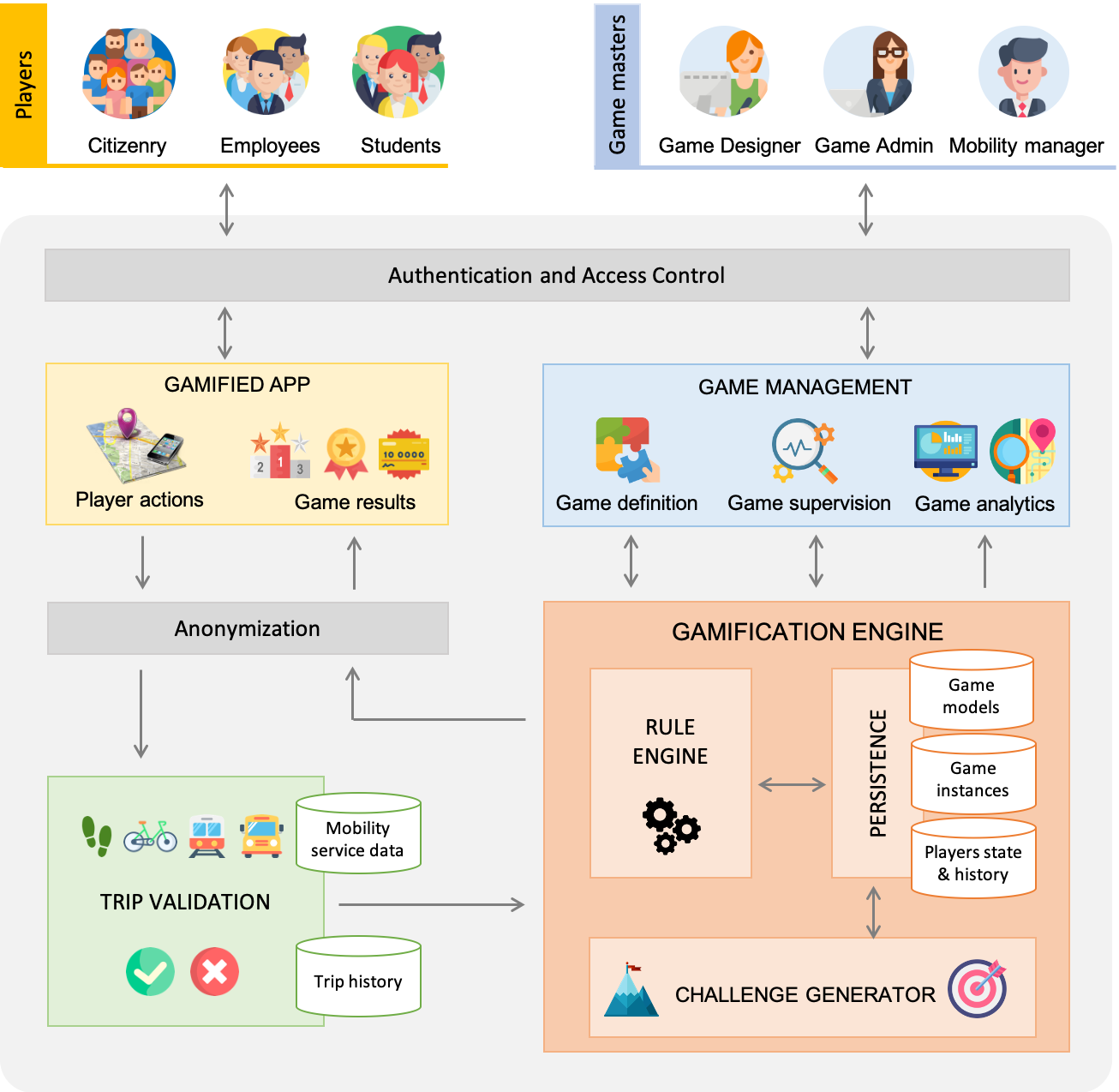
-
Game Management – contains the end-userapplications supporting the definition and deployment of games (Game Definition), the supervision and monitoring of on-going gamified actions (Game Supervision), and the analysis of game results and impact vis-a-vis to the mobility objectives by officials and decision–makers (Game Analytics).
-
Gamified App – players interact with the system through a Gamified App that can be customized to the specific target population and application context. The functionalities supported by the App concern the player’s registration and the management of the player’s profile, the tracking of sustainable mono and multimodal trips, the inspection of player’s results (e.g., points earned, badges and badge collections, active challenges with completion status, weekly and global leader boards ranking, personal mobility diary), information on weekly and global prizes, as well as the access to game rules and regulation.
-
Trip Validation – a mode detection componentthat allows comparing a user’s ”actual” mode, based on traces of the user’s position and activity sampled during her trip, vs. her ”declared” mode, that is, the mode selected by the user when starting the journey tracking through the app (see Figure 2). Only valid trips are sent as player actions to the Gamification Engine and contribute to the progress of the player in the game.
-
Authentication and Access Control – the access to the platform is handled by the Authentication and Access Control component, which supports a safe identification of end-users and determines their authorizations to access the requested functionalities/components in the platform.
PLAY&GO APPLICATION SCENARIOS
Large-scale sustainable mobility campaigns
Home2work sustainable mobility
-
the possibility of tuning the campaign objectives and rewarding mechanisms to the company-specific context and needs (e.g., selecting the transport modes to promote, customizing virtual and real incentives, tuning the validation algorithm to the specific mobility context);
-
the possibility of automatically certifying the validity of employees journeys, yet preserving their privacy;
-
the availability of dashboards, for mobility managers, to monitor the impact of the campaign and to support for the distribution of incentives, ensuring both employees’ privacy (through aggregated data) and accountability.

